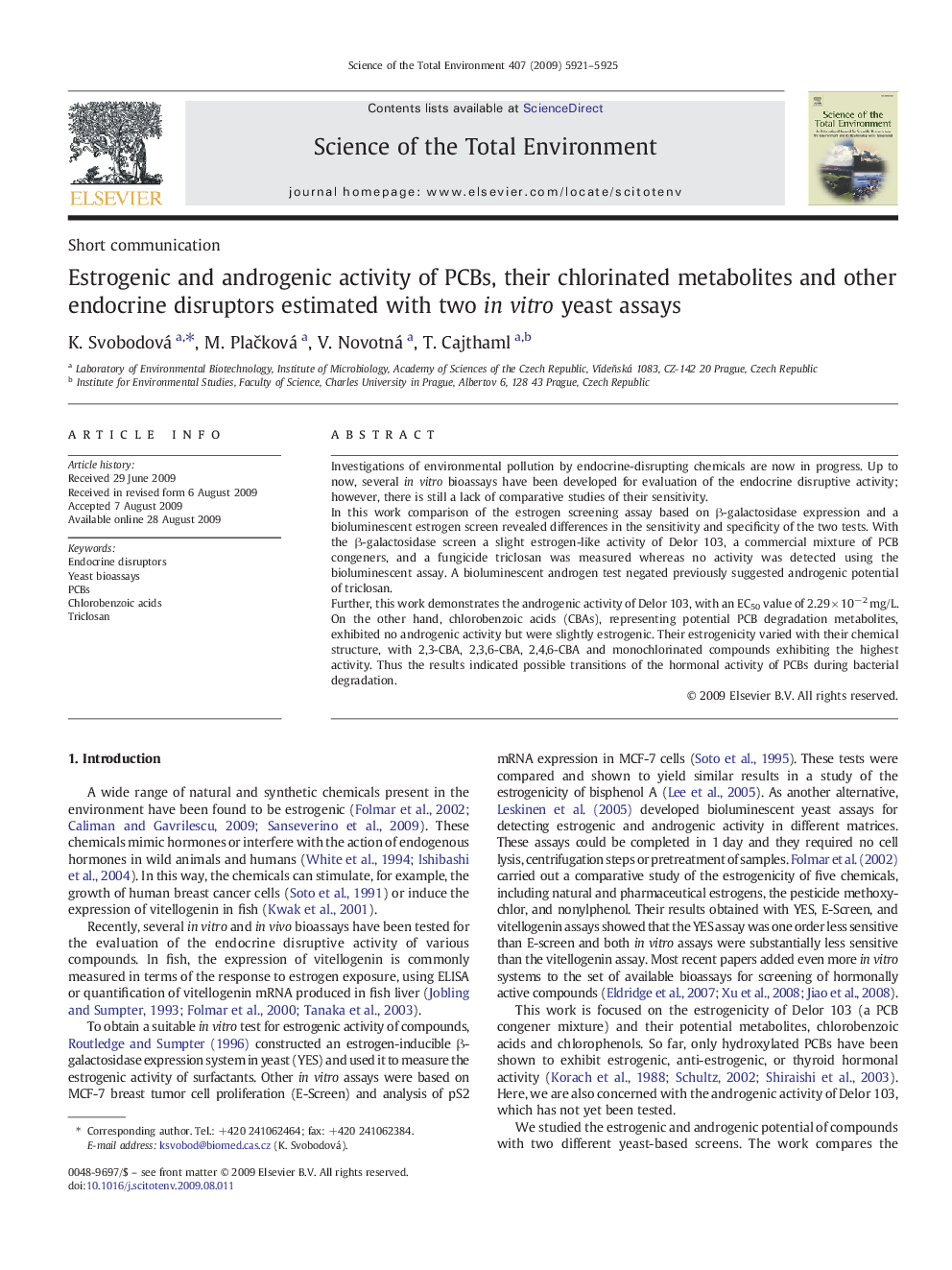| Article ID | Journal | Published Year | Pages | File Type |
|---|---|---|---|---|
| 4431169 | Science of The Total Environment | 2009 | 5 Pages |
Investigations of environmental pollution by endocrine-disrupting chemicals are now in progress. Up to now, several in vitro bioassays have been developed for evaluation of the endocrine disruptive activity; however, there is still a lack of comparative studies of their sensitivity.In this work comparison of the estrogen screening assay based on β-galactosidase expression and a bioluminescent estrogen screen revealed differences in the sensitivity and specificity of the two tests. With the β-galactosidase screen a slight estrogen-like activity of Delor 103, a commercial mixture of PCB congeners, and a fungicide triclosan was measured whereas no activity was detected using the bioluminescent assay. A bioluminescent androgen test negated previously suggested androgenic potential of triclosan.Further, this work demonstrates the androgenic activity of Delor 103, with an EC50 value of 2.29 × 10− 2 mg/L. On the other hand, chlorobenzoic acids (CBAs), representing potential PCB degradation metabolites, exhibited no androgenic activity but were slightly estrogenic. Their estrogenicity varied with their chemical structure, with 2,3-CBA, 2,3,6-CBA, 2,4,6-CBA and monochlorinated compounds exhibiting the highest activity. Thus the results indicated possible transitions of the hormonal activity of PCBs during bacterial degradation.
